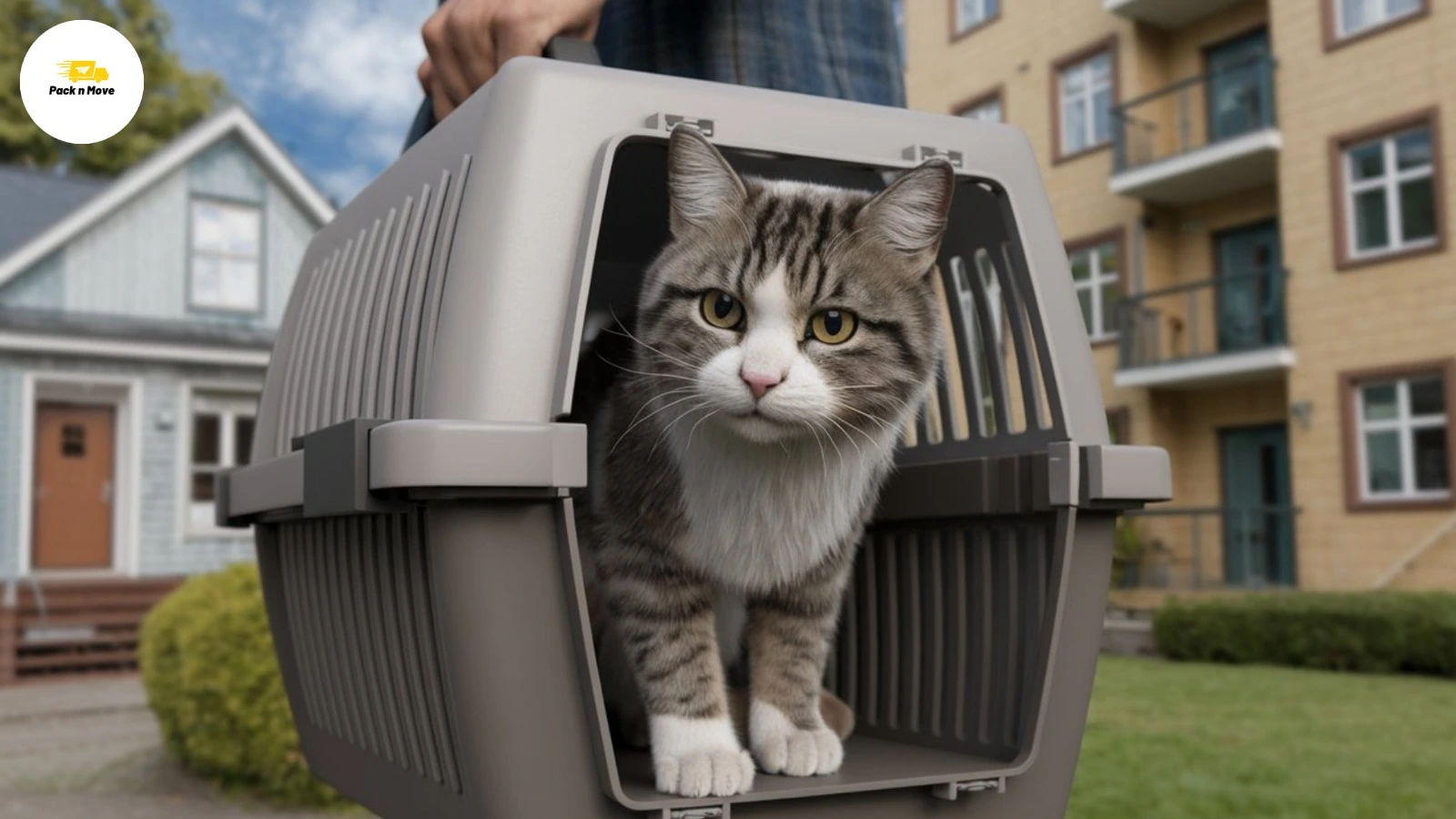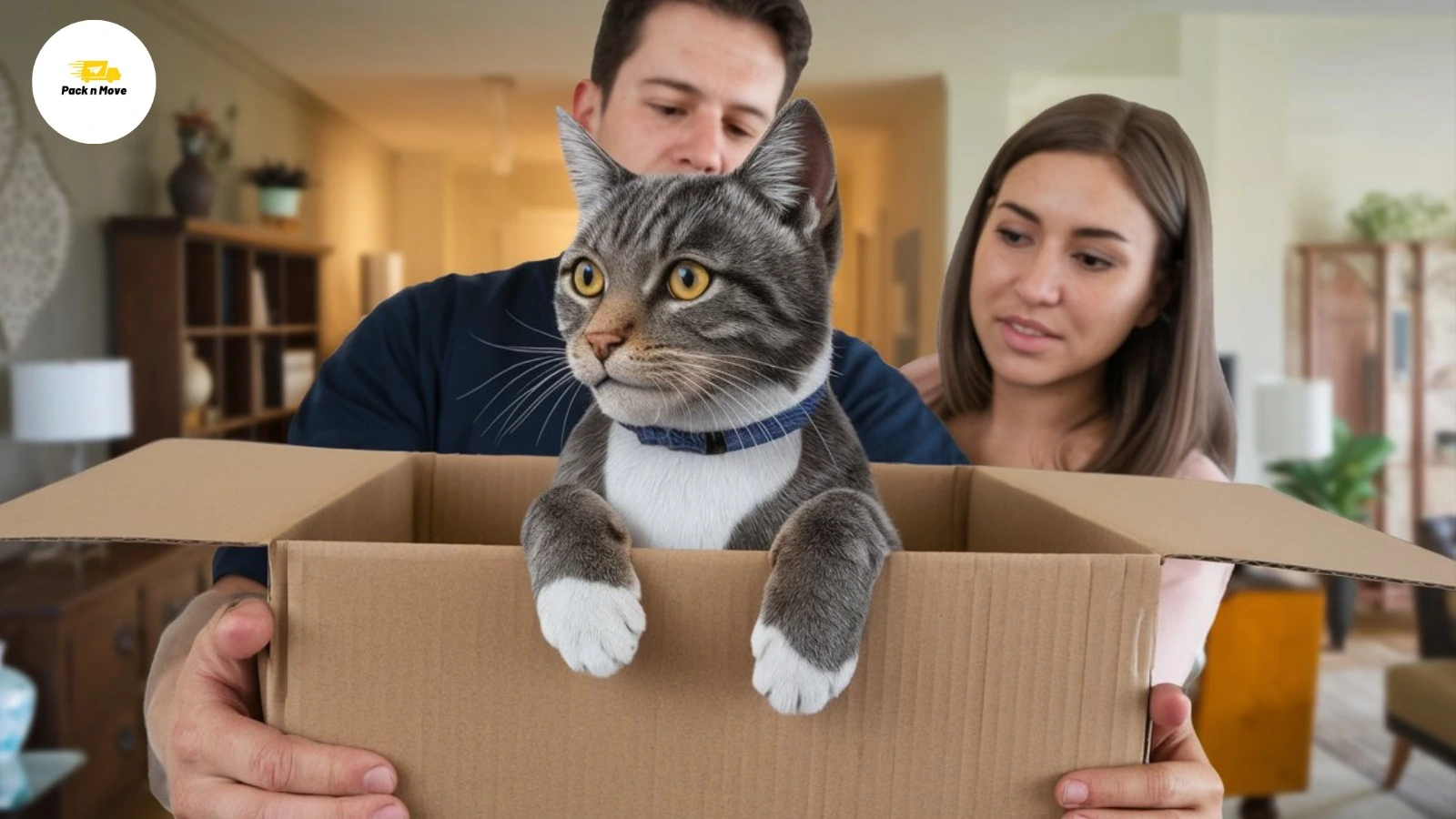When moving from a house to an apartment, it’s essential to ensure that the transition for your cat goes as smoothly as possible. While cats may seem content in their homes, they can also struggle with change. To help your kitty adjust, start by keeping your cat’s carrier familiar. This way, your cat will feel secure during the move. Make sure to avoid common mistakes that can lead to a stressed or nervous pet. For example, if your cat is freaking out, it may not want to eat or might even become sick.
To have a successful move, prepare your cat well. Before the move, make a list of tips, like allowing your cat to explore the new home gradually. Ensure that everything they need—like their litter box and food—is accessible right away. With careful planning, you can reduce any behavior issues that may arise from this big change. Remember, keeping your kitty calm is the key to making the move easier for everyone involved.
Keep your home comfortable

As you prepare for moving day, it’s essential to minimize stress for your feline friends. Your cat will notice the boxes and other belongings that seem to disappear. To help them adjust, keep their litter box, food, water bowls, scratching post, and cat bed in familiar places until the last moment. This way, your cat can track the items that are most important to them, creating a sense of stability amid the changes.
If you can, try to move packed boxes to the basement or garage. This placement keeps the main areas of your home more barrier-free and allows your cat to roam comfortably without feeling overwhelmed. A calm environment is key to easing their anxiety during this situation. Remember, every small effort counts in helping your pet adapt to the new home.
Provide calming aids
When moving your cat to a new apartment, consider using calming aids available in the market. These products often contain pheromones that can help activate calming sensations in your cat’s brain. Options like plug-in diffusers, sprays, and aromatherapy collars are effective. You might also find wipes, treats, and oral drops helpful. Trying a few different options can help you see what your cat responds to best.
If you notice your cat becoming concerned as soon as you start the packing process, don’t hesitate to use these calming products immediately. They can make a significant difference in easing your cat’s anxiety during this transition. The goal is to make the move as smooth as possible for your feline friend, helping them adjust better to their new environment.
Introduce the carrier early
When you’re moving, it’s important to help your cat feel comfortable with its carrier. Start introducing the carrier as early as possible in the process. Place the carrier with the door open in your home so your cat can explore it freely. Turn it into a cozy little hidey-hole where your cat can feel at ease. Adding a pillow or a soft blanket will make it feel more safe and cozy.
To make it even more inviting, put some catnip or treats inside the carrier. This will encourage your cat to crawl in and check for surprises. You can also spray the inside with a calming scent to help enhance the overall ambiance. By making the carrier a special place, you’ll help your cat feel more relaxed during the move.
, check for any small openings where your cat could escape or hide. For example, a box spring with an open bottom can create a hiding place that may be difficult to access when you need to get your cat out.
Cat proof your new home
When you move to a new house, helping your cat adjust to your new home is essential for their well-being. Start by creating a safe space for your cat in a quiet room, where they can feel secure while they explore their new surroundings. This space should include a cozy cat condo or a cat tree, ensuring your cat has room to climb and play. Use familiar items from their old home, like a favorite blanket or toys, to make the transition smoother. Before the move, tips for moving with cats include getting your cat carrier ready and keeping your cat indoors during the chaos of packing and moving.
Once you’ve settled in, make sure your cat has time to explore the rest of the house at their own pace. Feed your cat at regular intervals and offer cat treats to encourage them to venture out. Keep an eye on your cat as they navigate their new space, and provide opportunities to play with your cat to create positive associations with the new environment. By following these tips to help your cat adjust, you’ll ensure they feel comfortable and secure in their new home.
Create a safe space in your new home
When moving to a new home, creating a safe space for your feline friend is essential to help the cat adjust. In the days before the move, prepare a room for your cat that is quiet and free from distractions. Once you move my cat, let your cat get familiar with this designated area. A sturdy cat carrier can help ensure a smooth transition, preventing your cat from getting too stressed during the journey. After arriving, put your cat in this safe room and allow them to explore at their own pace. This will make your cat feel comfortable in the new house and help them adjust gradually.
As a cat owner, it’s important to take the time to help your cat feel secure. Introducing your cat to the rest of the new house or apartment can happen slowly. You might find that cats take their time to acclimate, so be patient. Allow your cat to stay in their safe room for as long as they need. Once they seem more relaxed, you can encourage exploration of other areas. Remember, the goal is to make your cat feel comfortable in the new environment, ensuring a positive experience during this significant change. With a little effort, you can make the transition smoother and more enjoyable for both you and your furry companions.
Introduce your kitty to the rest of the house slowly
When it’s time to move your cat to a new home, it’s essential to let your cat adjust gradually. Start by confining your female cat to one room in your new house for a few days. This will help your cat stay comfortable in an unfamiliar environment. While your cat is inside, allow it to explore its new surroundings at its own pace. Different cats have varying levels of comfort with change, so keep this in mind. For some cats typically don’t handle stress well, and introducing them to new scents and sounds too quickly can be overwhelming.
After a few days, you can gradually start to let the cat explore other areas of the house. Monitor your cat’s behavior; if it seems hesitant, give it more cat time in its initial space. Remember, cats find comfort in familiarity, so it may take weeks before the move feels normal. As your cat begins to feel safe, it will become more relaxed in its new environment.
Keep your cat indoors
Keeping your cat inside is essential for their well-being, especially when you are moving a cat to a new environment. When I brought my cat out of the carrier and into our new apartment or house, I realized that cats aren’t fond of change. It can be stressful for them to adjust to the new surroundings, and my goal was to help my cat get comfortable as quickly as possible. Times with my cats have taught me that cats don’t thrive when they are let outside, especially during this transitional period.
As long as your cat remains indoors, they will feel safer and more secure. To help your cat adjust, create a cozy space around the new home, filled with familiar toys and bedding. This will make your cat to adjust more easily. Remember, while it may be tempting to let your cat outside, keeping them indoors ensures they stay protected and can truly embrace their new living situation.
Get Your Cat Used to a Carrier
Relocating a cat can be a daunting task, especially when moving to a new home. To ease this transition, it’s essential to help your cat get accustomed to the carrier well in advance. Start by placing the carrier in a familiar space and leaving the door open. You can encourage your feline friend to explore it at their own pace, making the experience less intimidating. This way, your cat can associate the carrier with positive experiences.
It’s important to remember that moving to a new home can be stressful for your pet. If your cat won’t enter the carrier willingly, consider using treats or toys to entice them. Gradually, as your cat becomes more comfortable, you’ll find that they adapt better to the idea of being in the carrier. By taking these steps, you can ensure your cat feels safe and secure during the journey.
Tips on Relocating a Cat to a New Home

Relocating a cat to the new home can be a stressful experience for both you and your feline friend. To ensure a smooth transition, it’s essential to prepare in advance. Start by creating a safe space in your new home where your cat can feel secure. This area should include familiar items like their bed, toys, and litter box. By doing this, you help your cat adjust more easily, much like a cat naturally finds comfort in familiar surroundings.
During the move, keep your cat comfortable in a secure carrier. Avoid opening the carrier until you’re in the new space to prevent any escape attempts. Once settled, allow your cat to explore at their own pace. Patience is key; give them time to acclimate to their new environment. With these steps, you’ll help make the relocation process as seamless as possible for your furry companion.
Keep Your Cat’s Routine Consistent
Keeping your cat’s routine consistent is essential for their overall well-being. Cats are creatures of habit and thrive on predictability, which helps reduce their stress levels. Establishing a daily schedule for feeding, playtime, and grooming can make your feline friend feel more secure in their environment. When your cat knows what to expect, they are less likely to exhibit signs of anxiety or behavioral issues.
Additionally, a regular routine can promote better health. Consistent feeding times can help regulate their metabolism, while scheduled play sessions can keep them active and engaged. This is particularly important for indoor cats, who may need extra stimulation to prevent boredom. A well-structured day allows you to monitor their habits, making it easier to spot any changes that could indicate health problems.
In conclusion, prioritizing a stable routine for your cat can lead to a happier and healthier life. By setting aside time for their needs and maintaining a familiar schedule, you foster a strong bond and create a safe space for your furry companion.
Use Pheromone Sprays
Pheromone sprays are designed to enhance attraction and communication between individuals by mimicking natural pheromones, which are chemical signals that influence social and sexual behaviors. These sprays are often marketed as tools for boosting confidence and enhancing romantic encounters, making them popular among those looking to improve their dating experiences.
When using pheromone sprays, it’s essential to apply them strategically. A light spritz on pulse points, such as the wrists or neck, allows the fragrance to mix with body heat, maximizing its effectiveness. Additionally, choosing a scent that complements your natural aroma can further enhance the allure.
While many users report positive experiences with pheromone sprays, results can vary widely. It’s important to approach these products with an open mind and realistic expectations, as personal chemistry and individual preferences play significant roles in attraction.
